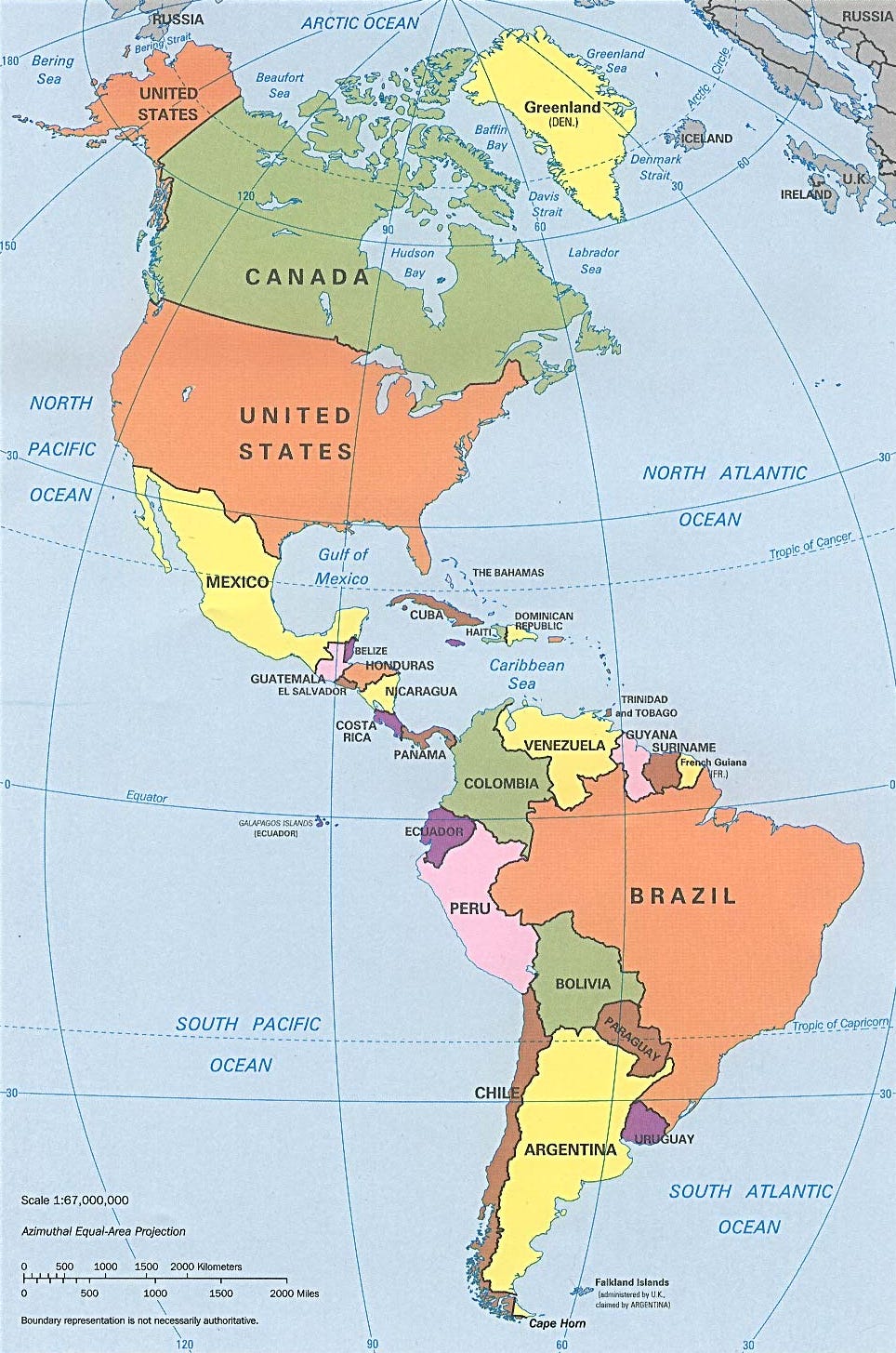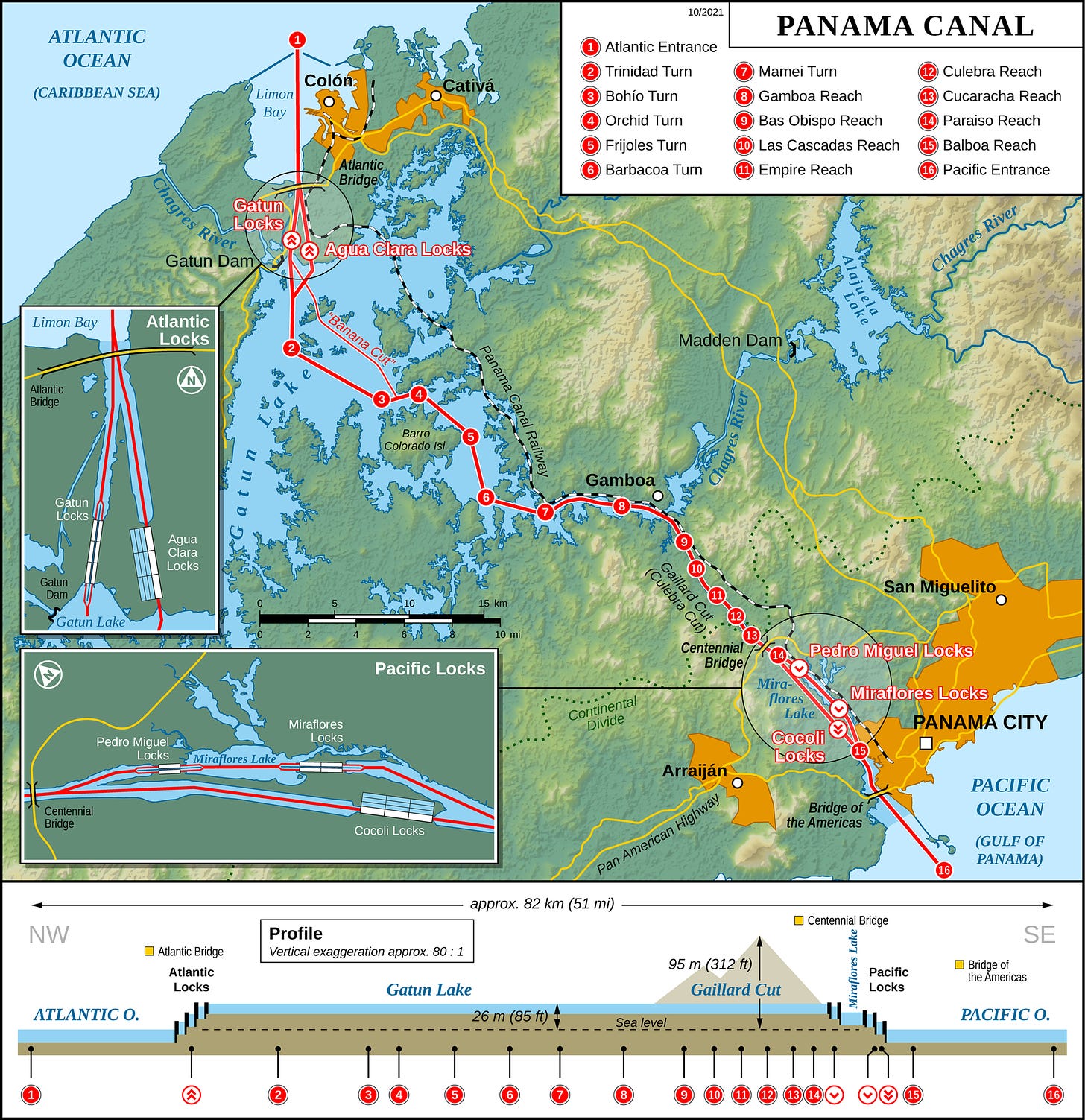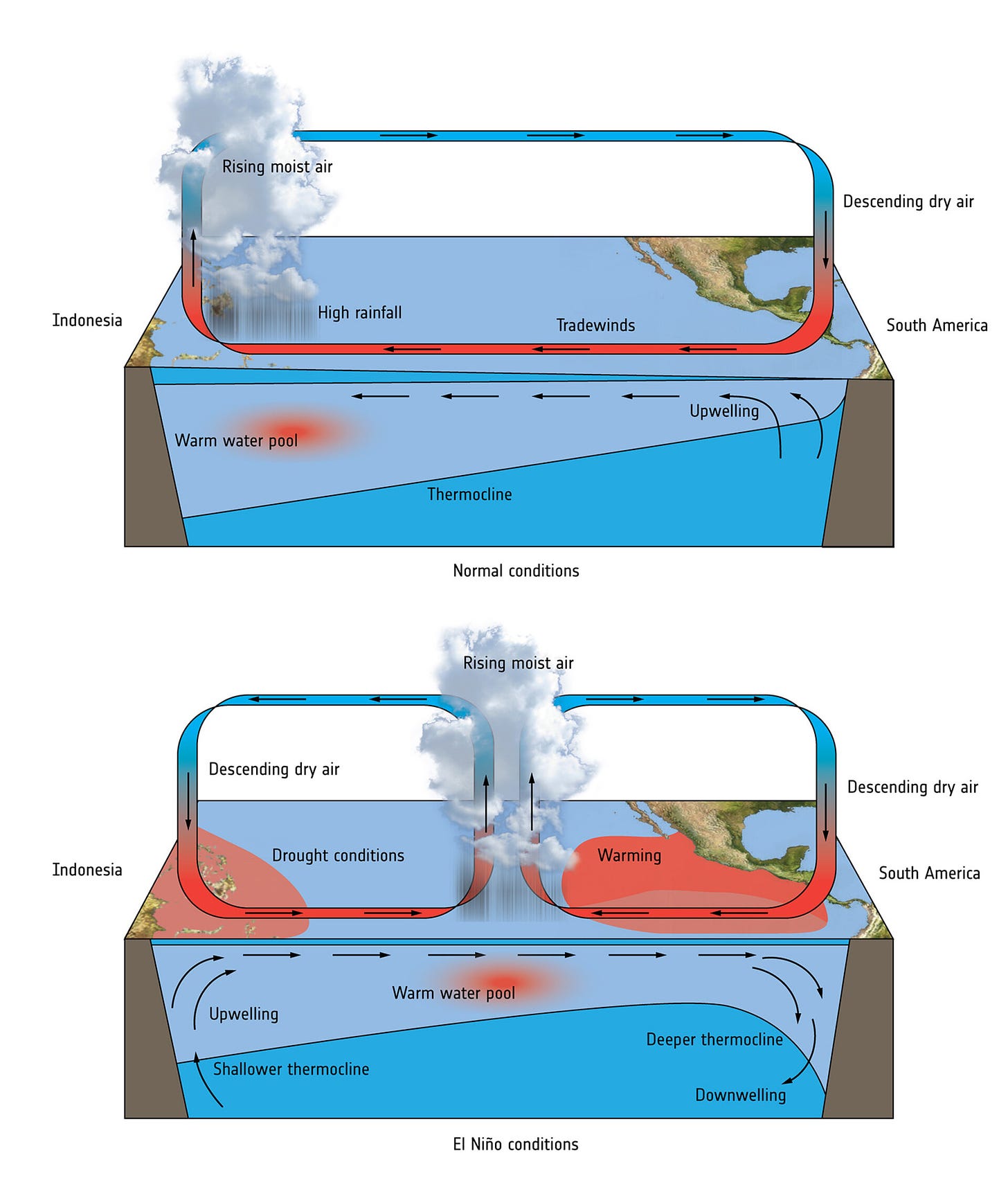If you have seen the map of North and South America, it is obvious that the tectonic activity has yet to rip the two continents apart. As a result, a thin strip of land still connects the two continents. That strip is the narrowest in Panama. One day millions of years from now these two continents will certainly shear apart due to plate tectonics as the South American plate moves North-East and the North American plate pushes North-West. But that day is not today.
Sailing around South America would add about 8000 Nautical Miles or about 15000 Kms to the trip. A cargo ship uses between 2 and 5 tons of fuel for each kilometre covered. Cost savings be damned, can you imagine how much more pollution it would cause?

Source: Wikipedia
I used to think of the Panama Canal as a project meant to cut a neat line through Panama from the Atlantic Ocean to the Pacific Ocean. Thanks to the way the map looks and my inability to fathom scale, I thought the canal was just a kilometre or two across. The actual project was a lot more complicated.
Panama is located 26 meters above sea level and has several Lake systems that are a part of the country. The Gatun Lake which is part of the canal is located above sea level as well.
The plan to build the canal was hatched in the mid-19th century. After a lot of discussions, France started work in 1881. The Canal to be cut from the Atlantic side was the short one, the Canal to be cut on the Pacific side was a lot more complicated and involved the development of far more complex channels. The rest of the navigation would take place through the lakes. Gatun Lake which spans almost half the country would provide inland waterways.
The French investors sunk their money and soon ran out of capital. Despite hiring the team that had finished the Suez Canal, they found this to be a far more complex undertaking. Then the Americans took over the development company and finished the Canal.

Source: Wikipedia
As can be seen in the profile above. The ships coming in from either ocean would have to be raised through a series of locks to a level 26 meters above sea level. Then they would be allowed to navigate through the lake up to the other side and then dropped back into the ocean through a series of locks.
It takes about 11 hours for a ship to navigate the 82 Km across the canal and here is a Timelapse video of it.
So you see the ships navigate most of the time through Lake Gatun which makes this crossing even possible.
There is a problem in the Pacific Ocean

Source: ESA
Every few years, the El Niño phenomenon occurs in the Pacific Ocean around the equator. It can affect the weather around the globe. Normally, the Trade Winds blow from east to west, pushing warm water in the same direction. This warm water pools around Asia and Australasia. On the other side of the ocean around South and Central America, as the warm water is pushed away from the coast, it is replaced by cold water that is pulled up from deeper down in the ocean. In the west, the warmer water adds extra heat to the air, which causes the air to rise and so more cloud and rainfall. This leads to atmospheric circulation where warm moist air rises in the west and dry cool air descends on the eastern side of the ocean.
The El Niño disrupts this normal pattern by weakening the Trade Winds, which results is less warm water being pushed to the west and therefore less cold upwelling water in the east. This allows the usually colder parts of the ocean to warm, affecting the normal temperature difference between the eastern and western Pacific. This changes the normal pattern of rising air and therefore wind and rainfall patterns – which has a knock-on effect for the weather around the world.
Source: ESA
In effect, the heating is spread all over the Pacific Ocean instead of being focused towards the Asian side. This causes cloud formation to be more erratic and hence causes a decrease in rainfall on the western side of the Pacific.
Over the past few years, there have been drought-like conditions all over the Tropics because of this phenomenon. For instance, since 2011, California has been classified as drought-hit every year apart from 2018 and 2019. It has become so common, the US government even has a site called drought.gov. The only two states to get their own section on the site are California and Nevada.
Why did you tell me all this Vivek?
Well, this rain fills the Gatun Lake on which the successful navigation of the Panama Canal is dependent. Panama is faced with a drought.
Starting Sunday (June 25), container ships in the Panama Canal will be limited to a depth of 43.5 feet or 13.3 meters. A series of depth restrictions for large ships has been ongoing since January due to shallower waters caused by drought in the region. The largest ships that go through the canal are Panamax container shipswhich require at least 43 feet to pass through.
[…]
The new restrictions will require ships to either carry less cargo or shed other weight to float higher in the canal. But the lighter loads may lead to shipping delays. Capacity limits and surcharges are already increasing for vessels going through the canal. Liquid Natural Gas (LNG) carriers will not be affected as their depths are typically 37 feet (11.2 meters) deep. LNG carriers registered a 31.4% increase in tonnage through the Panama Canal following the war in Ukraine. The Panama Canal Authority placed new tariffs on LNG carriers this year due to the spike.
Source: Quartz
One of the most critical navigation routes in the world may be rendered unnavigable. This is critical for good movement from Asia to Europe and backward. In all likelihood, this situation is likely to get worse.
Don’t worry, there is hope. The Arctic is melting. The glaciers are disappearing at phenomenal speeds. A shipping route from Europe to Asia over Canada will probably open up sooner than later.
I am sure at that time there will be those who will even praise climate change for helping businesses save shipping costs.

Leave a Reply